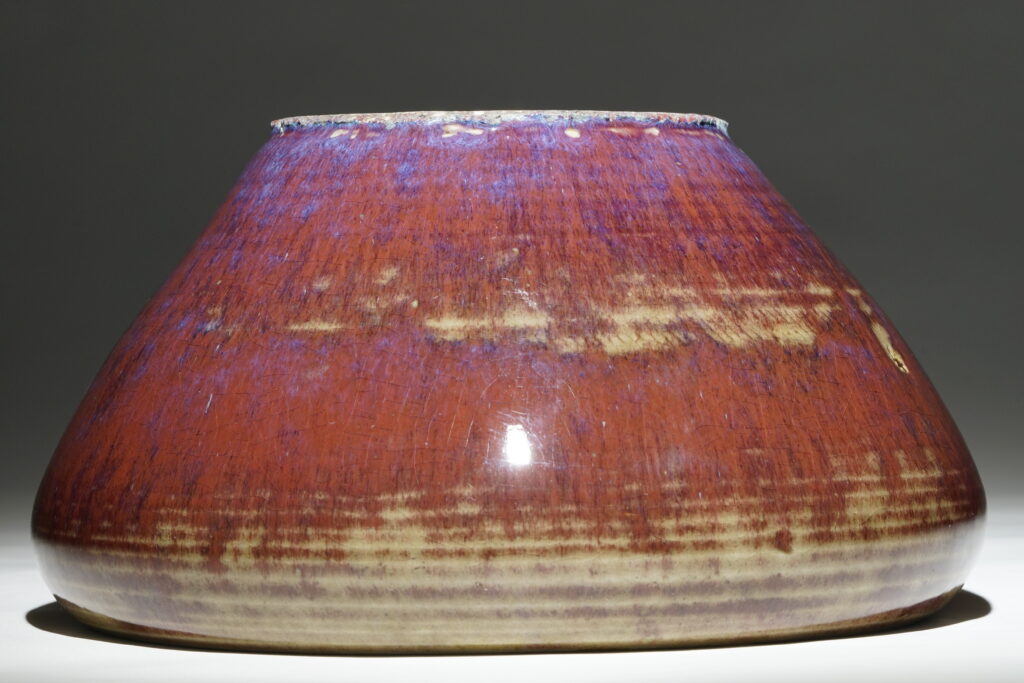
Flambe glazes are a type of ceramic glaze that is characterized by their unpredictable and often colorful effects. They are created by applying a mixture of minerals to the surface of a ceramic vessel and then firing it at a high temperature. The minerals react with each other and with the clay of the vessel to create a variety of effects, including swirls, drips, and splotches of color.
Flambé glazes were first developed in China during the Tang dynasty (618-907 AD). They became increasingly popular during the Song dynasty (960-1279 AD), and they were used to decorate a wide range of ceramic wares, including jars, bowls, plates, and cups.
One of the most famous types of flambé glaze is sang de boeuf, or oxblood glaze. Sang de boeuf glaze is characterized by its deep red color, which is created by the addition of copper oxide to the glaze mixture. Sang de boeuf glaze was first developed during the Kangxi reign (1662-1722 AD) of the Qing dynasty (1644-1912 AD). It quickly became popular among the Chinese aristocracy, and it was also exported to other parts of the world.
Other types of flambé glazes include:
- Jun glaze: Jun glaze is a type of flambé glaze that is characterized by its blue-green color and its crackled surface. Jun glaze was first developed during the Northern Song dynasty (960-1127 AD).
- Ru glaze: Ru glaze is a type of flambé glaze that is characterized by its sky blue color and its craquelé surface. Ru glaze was first developed during the Northern Song dynasty.
- Ge glaze: Ge glaze is a type of flambé glaze that is characterized by its crackled surface and its variety of colors, including black, brown, and white. Ge glaze was first developed during the Northern Song dynasty.
Flambé glazes were used to decorate a wide range of ceramic wares, including jars, bowls, plates, cups, and vases. They were also used to decorate other types of objects, such as tiles and architectural elements.
Flambé glazes are still used by potters today. They are prized for their beauty and their unpredictable effects. Flambé glazed ceramics are highly sought-after by collectors, and they can be very expensive.
Conclusion
Flambé glazes are a unique and important part of Chinese ceramic tradition. They are known for their beauty, their unpredictability, and their rarity. Flambé glazed ceramics are highly prized by collectors, and they continue to be produced by potters today.